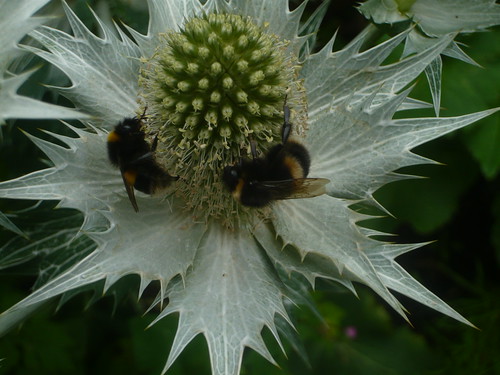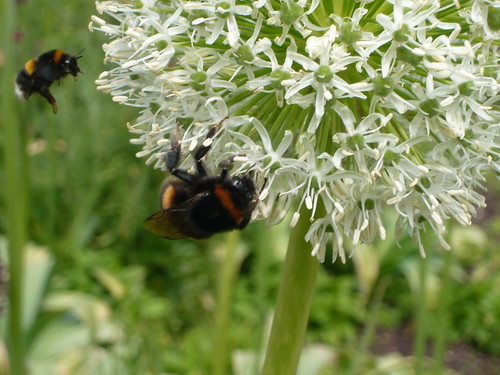
How to Attract Bees into your Garden
Bees are not as attractive as butterflies but they are an essential part of our ecosystem. Your garden and the environment will benefit from bees twice over as they provide a visual spectacle whilst helping with pollination.
A garden full of bee catching and eye catching flowers from spring to autumn can be achieved by selecting some of the following plants.
Bees feed on nectar and need this energy giving resource as they transport pollen from one flower to the next. They also need water from moist soil.
Flowers Attracting Bees
- Sweet Violets – viola odorata
- Shasta daisy and Coreopsis in summer
- Buddleia the butterfly bush in white pink or lilac and Lilac also feed bees.
- Foxgloves, Lilac, Michaelmas Daisy and plants like Globe Thistle
- Delphinium, Aster and Day Lily
- Phacelia tanacetifolia Benth, Echium vulgare and Borago officinalis are purple flowering bee loving plants. In addition to their honey-producing properties they also make an attractive addition to your border.
Tips to increase Your Bee Population
- Do not use insecticides
- Get a large variety of plants to attract a variety of different bee species.
- Plant groups of the same flowers so they are easy to see not individual plants, not just dotted around.
- Clover is a popular flower with bees.
- Lone species of bee need a place to nest and there are now proprietary products for you garden
- Consider flowers to cover as many months as possible for food in the off season.
- Start keeping your own bee hives.
Bee Care Tips for Gardeners
Much has been written about the role of Bees in pollination.
Dire consequences are predicted if Bee populations continue to spiral downward. It therefore pays gardeners to keep up with the latest developments in the Garden Care Products Industry (pesticide manufacturers).
‘The Crop Protection Association is a key voice of the UK Plant Science Industry. They promote the role of modern plant science, the formulation and manufacture of synthetic and bio pesticides, seed and plant breeding, agricultural biotechnology and the breeding of bees.’ (They also seem to manufacture ampersands.)
Common Sense Gardening looks like a publicly funded quango. They say ‘Garden Care Chemicals are safe to the user and the environment provided that they are stored properly, used according to the label and disposed of correctly. Responsibility for safe, effective use, storage and disposal lies with the individual user. Always read the label and apply as directed.’
Bee responsible with Care Chemicals
- Always read the product label and follow the instructions exactly
- Do not spray when bees are foraging it’s generally better to apply early morning or in the evening when bees are less active
- Do not directly spray open blooms
- Do not spray lawns when weeds are in flower; mow first to remove flower heads
- Bee informed, bee safe, bee careful and read more on this leaflet
- Take care to minimise drift to nearby flowering plants or hives in and around the treated areas.
- Check with beekeepers for locations of local hives that you do not want to damage
Bee Facts & Information
- 3 different types of bee a queen, drones and workers are found in a colony which may contain 85,000-100,000 bees.
- There are around 250 species of bee in the UK, the vast majority of which are solitary.
- There are 25 species of bumblebee and one species of honey bee. The bees are under threat from a paracite Varroa destructor.
- A worker bee is always femail and produces less than a teaspoonful of honey in its 2 month life.
- Worker bee visits up to 100 flowers on one trip from the hive.
The British Beekeeping Association informs on the importance of bees in the environment and the craft of beekeeping. It also support beekeepers through education necessary to maintain healthy colonies of honey bees.



